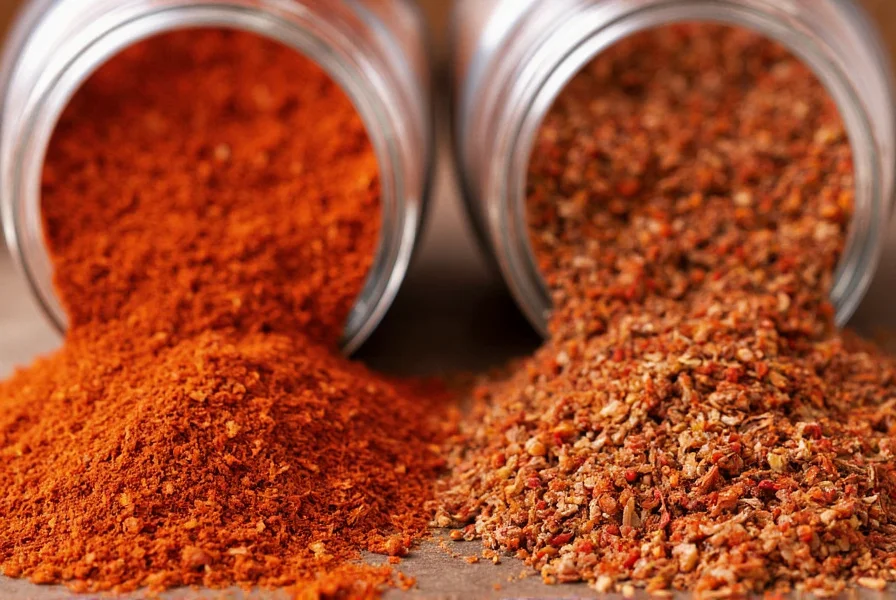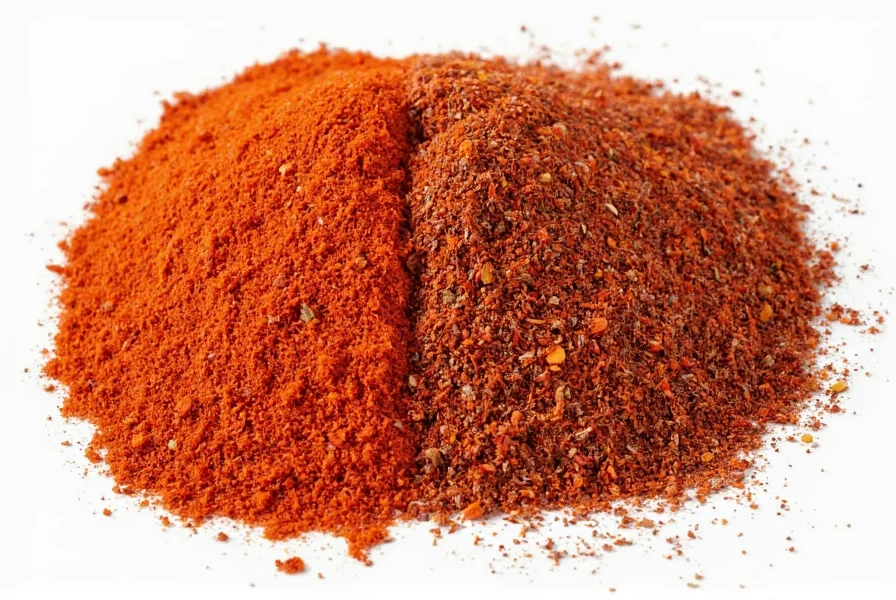When you're following a recipe that calls for crushed red pepper or red pepper flakes, you might wonder if these are interchangeable ingredients. The straightforward answer is yes—they're identical products sold under different names. Understanding this culinary equivalence can prevent unnecessary grocery store confusion and ensure your dishes turn out perfectly spicy.
What Exactly Are Crushed Red Pepper and Red Pepper Flakes?
Crushed red pepper and red pepper flakes both consist of dried, ground chili peppers, primarily cayenne peppers. Manufacturers process these peppers by removing stems and seeds, then crushing the remaining material into small flakes or granules. The resulting product contains capsaicin, the compound responsible for chili heat, along with flavorful compounds that enhance dishes.
The slight variation in texture comes from different processing methods. Some brands produce finer "crushed" versions, while others create coarser "flakes." However, these differences are minimal and won't affect your cooking results. When examining crushed red pepper ingredients versus red pepper flakes ingredients, you'll typically find only one component: dried chili peppers.

Why Two Different Names for the Same Product?
The dual terminology exists due to regional naming preferences and marketing decisions:
- Regional variations: East Coast Americans often say "crushed red pepper" while West Coast cooks prefer "red pepper flakes"
- Brand differentiation: Companies use different names to distinguish their products on crowded spice shelves
- Texture perception: Some consumers believe "crushed" implies finer texture while "flakes" suggests larger pieces
Despite these naming differences, food scientists confirm there's no standardized distinction between the two terms. When researching red pepper flakes composition, you'll discover both products contain the same base ingredient with identical heat levels.
Practical Cooking Implications
Understanding that crushed red pepper vs red pepper flakes are identical has several practical benefits for home cooks:
| Cooking Scenario | Substitution Guidance | Pro Tip |
|---|---|---|
| Recipe calls for 1 tsp red pepper flakes | Use 1 tsp crushed red pepper | Add gradually and taste—heat levels can vary by brand |
| Need finer texture for rubs | Grind either product slightly | Use coffee grinder dedicated to spices |
| Creating infused oil | Either works equally well | Steep 1-2 weeks for optimal flavor extraction |
When considering can I substitute crushed red pepper for red pepper flakes, the answer is always yes with a 1:1 ratio. The minor texture differences won't impact most recipes. For dishes where texture matters—like pizza toppings—either product provides the same visual appeal and flavor burst.
Heat Level Considerations
Both products typically measure 30,000-50,000 Scoville Heat Units, placing them in the medium-hot range. However, several factors affect perceived heat:
- Brand variation: Different manufacturers use varying pepper blends
- Age: Older product loses potency over time (store in airtight container)
- Seed content: Products with more seeds deliver more heat
When comparing crushed red pepper heat level to red pepper flakes heat level, you'll find no meaningful difference. Both provide consistent heat when purchased from the same brand. For precise control, add incrementally and taste as you cook.

Common Misconceptions Clarified
Several myths persist about these ingredients:
- Myth: Crushed red pepper contains additional spices
Fact: Pure crushed red pepper contains only dried chili peppers - Myth: Red pepper flakes are milder than crushed versions
Fact: Heat levels depend on pepper variety, not naming convention - Myth: One is better for Italian cooking while the other suits Asian dishes
Fact: Both work equally well across all cuisines requiring chili heat
When investigating are red pepper flakes just crushed peppers, food labeling regulations confirm they're identical products. The FDA considers both terms acceptable for the same ingredient.
Storage and Shelf Life Tips
Maximize freshness for both products with these evidence-based practices:
- Store in airtight containers away from light and heat
- Keep away from stove to prevent moisture absorption
- Replace every 6-12 months for optimal flavor (check for faded color)
- Freeze for long-term storage (up to 2 years)
When following red pepper flakes storage tips, remember that both forms degrade at the same rate. The key is minimizing exposure to air, light, and humidity regardless of what your container labels call the product.
Professional Chef Insights
Top chefs confirm the interchangeability of these products:
"In my restaurant kitchen, we use both terms interchangeably. The naming depends on which supplier delivered that week. What matters is the quality of the peppers and consistent heat level—not what you call them." — Chef Michael Rodriguez, Executive Chef at Bistro Lumière
This industry perspective reinforces that crushed red pepper vs red pepper flakes substitution presents no culinary challenges. Professional kitchens treat them as identical ingredients.











 浙公网安备
33010002000092号
浙公网安备
33010002000092号 浙B2-20120091-4
浙B2-20120091-4